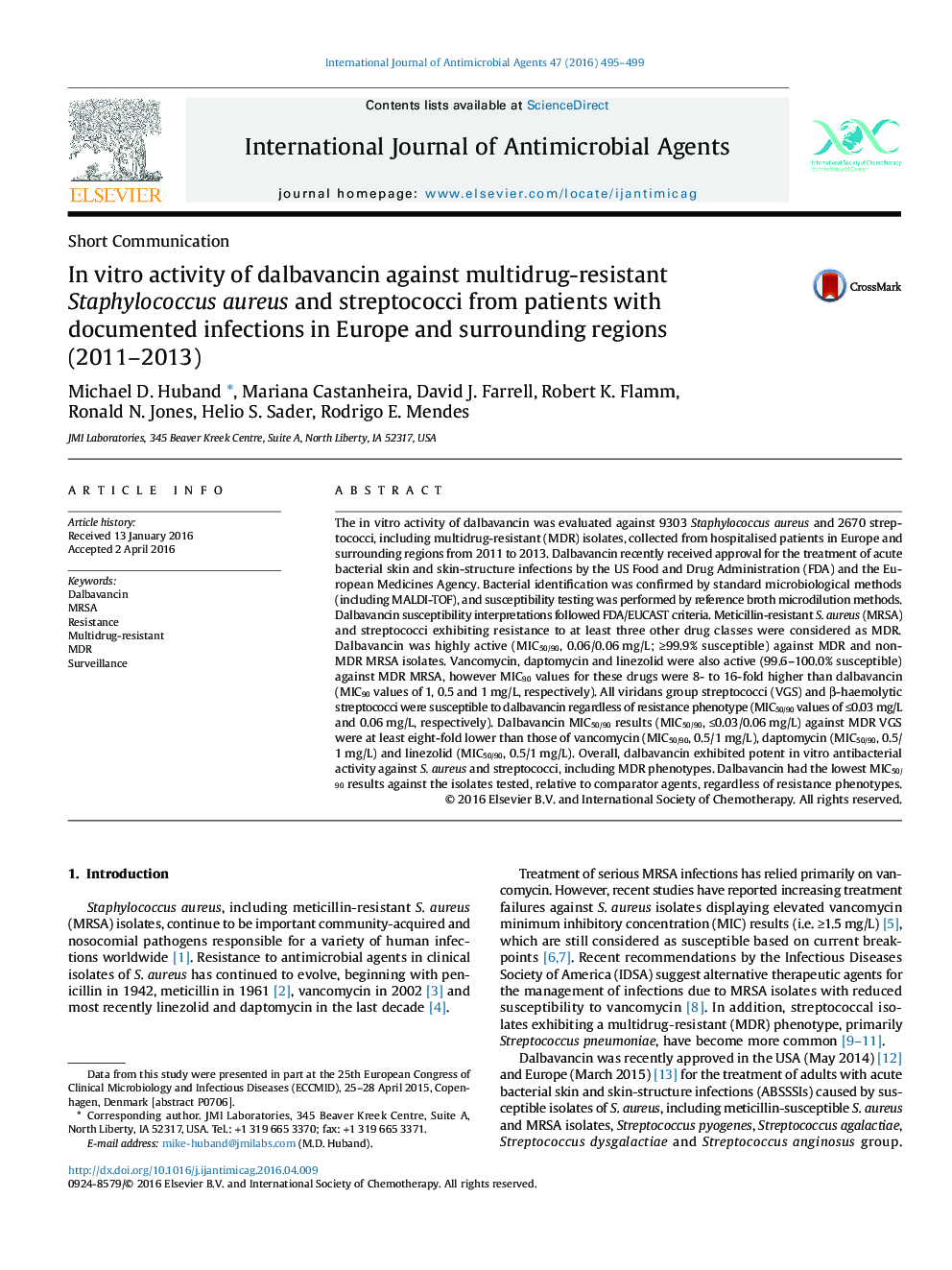| Article ID | Journal | Published Year | Pages | File Type |
|---|---|---|---|---|
| 3358469 | International Journal of Antimicrobial Agents | 2016 | 5 Pages |
•Dalbavancin exhibited potent in vitro activity against Staphylococcus aureus and streptococci.•Dalbavancin was highly active against multidrug-resistant S. aureus and streptococci from Europe.•Dalbavancin had the lowest MIC50/90 values relative to comparator agents.•100% of S. aureus (9303) from Europe were inhibited by ≤0.25 mg/L of dalbavancin.•Dalbavancin inhibited 100% of streptococci (2670) from Europe at ≤0.12 mg/L.
The in vitro activity of dalbavancin was evaluated against 9303 Staphylococcus aureus and 2670 streptococci, including multidrug-resistant (MDR) isolates, collected from hospitalised patients in Europe and surrounding regions from 2011 to 2013. Dalbavancin recently received approval for the treatment of acute bacterial skin and skin-structure infections by the US Food and Drug Administration (FDA) and the European Medicines Agency. Bacterial identification was confirmed by standard microbiological methods (including MALDI-TOF), and susceptibility testing was performed by reference broth microdilution methods. Dalbavancin susceptibility interpretations followed FDA/EUCAST criteria. Meticillin-resistant S. aureus (MRSA) and streptococci exhibiting resistance to at least three other drug classes were considered as MDR. Dalbavancin was highly active (MIC50/90, 0.06/0.06 mg/L; ≥99.9% susceptible) against MDR and non-MDR MRSA isolates. Vancomycin, daptomycin and linezolid were also active (99.6–100.0% susceptible) against MDR MRSA, however MIC90 values for these drugs were 8- to 16-fold higher than dalbavancin (MIC90 values of 1, 0.5 and 1 mg/L, respectively). All viridans group streptococci (VGS) and β-haemolytic streptococci were susceptible to dalbavancin regardless of resistance phenotype (MIC50/90 values of ≤0.03 mg/L and 0.06 mg/L, respectively). Dalbavancin MIC50/90 results (MIC50/90, ≤0.03/0.06 mg/L) against MDR VGS were at least eight-fold lower than those of vancomycin (MIC50/90, 0.5/1 mg/L), daptomycin (MIC50/90, 0.5/1 mg/L) and linezolid (MIC50/90, 0.5/1 mg/L). Overall, dalbavancin exhibited potent in vitro antibacterial activity against S. aureus and streptococci, including MDR phenotypes. Dalbavancin had the lowest MIC50/90 results against the isolates tested, relative to comparator agents, regardless of resistance phenotypes.
